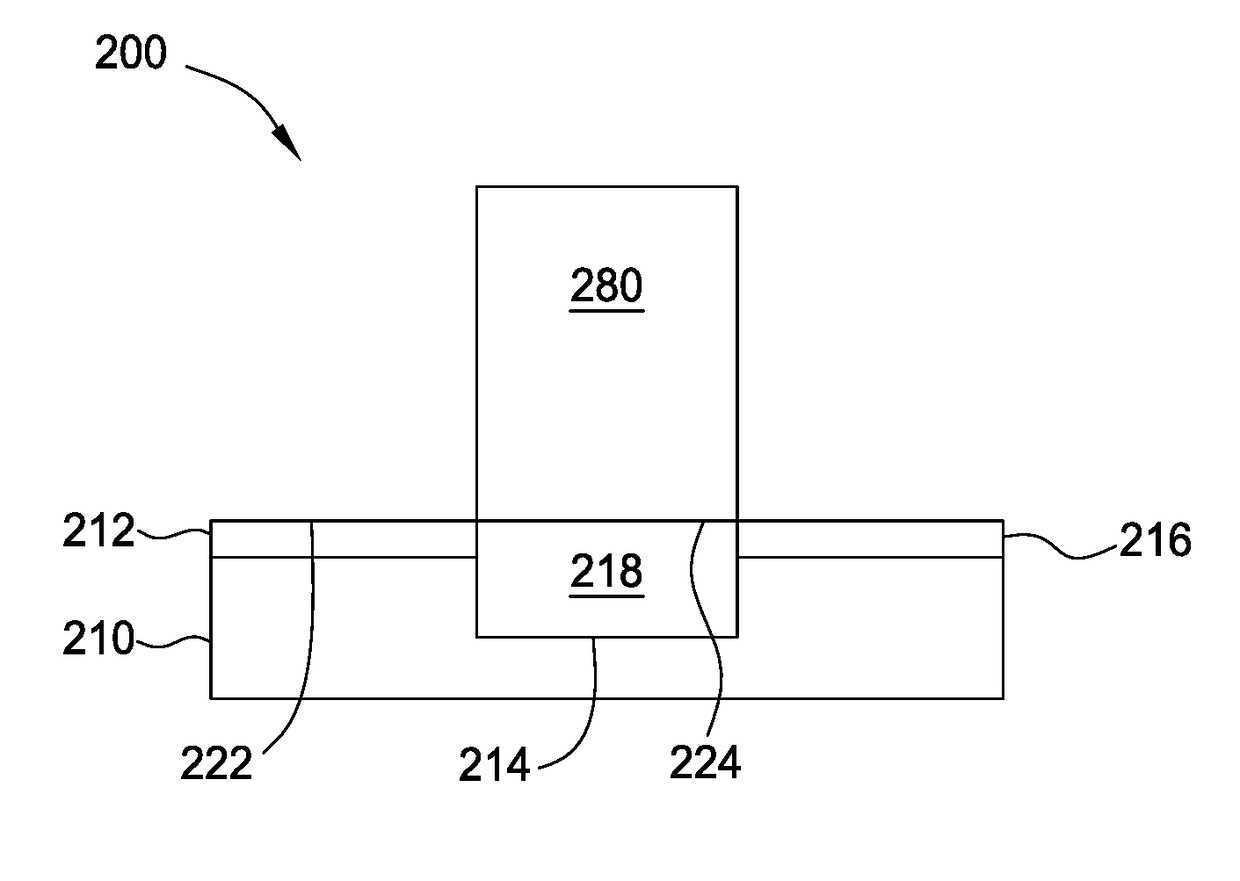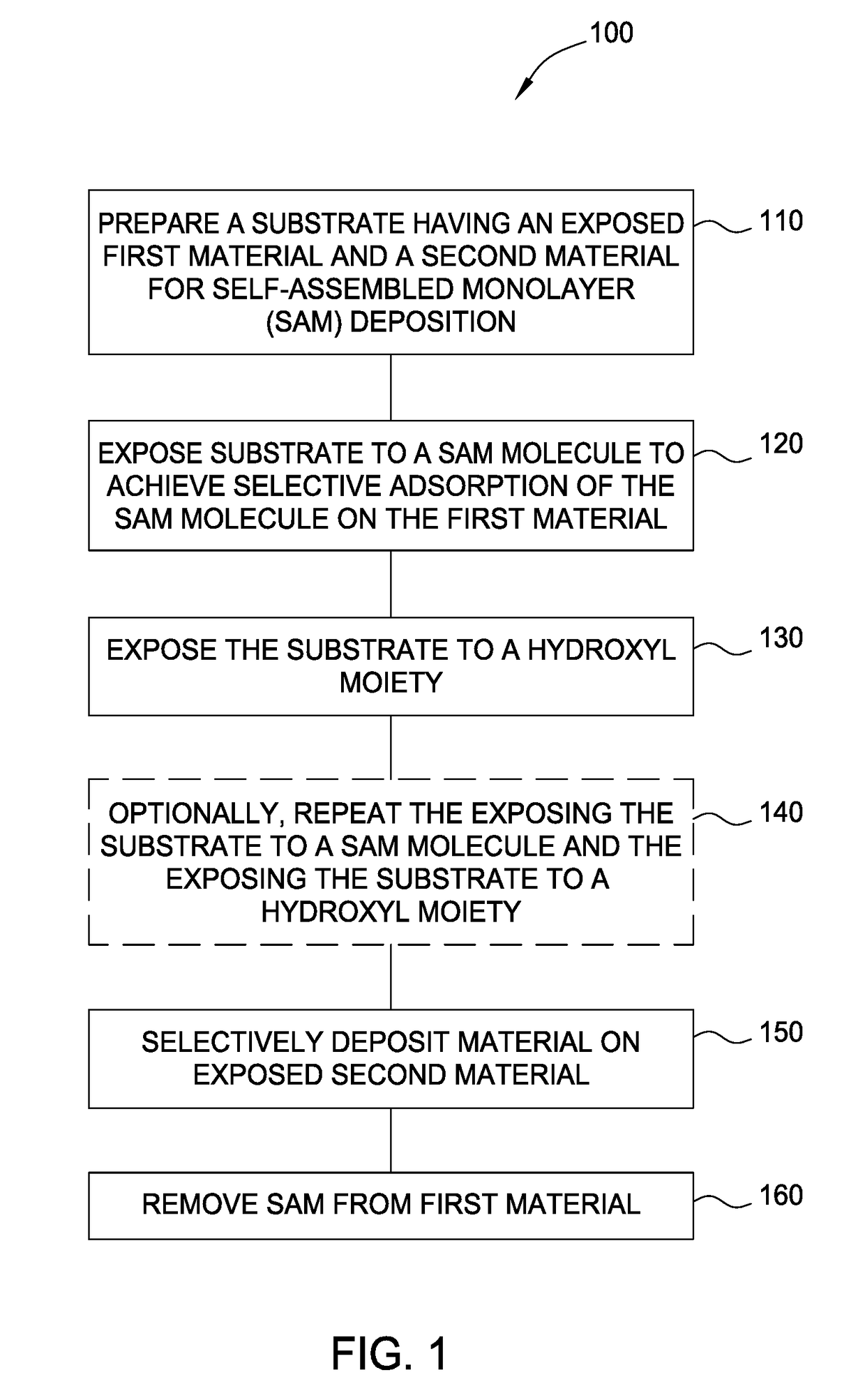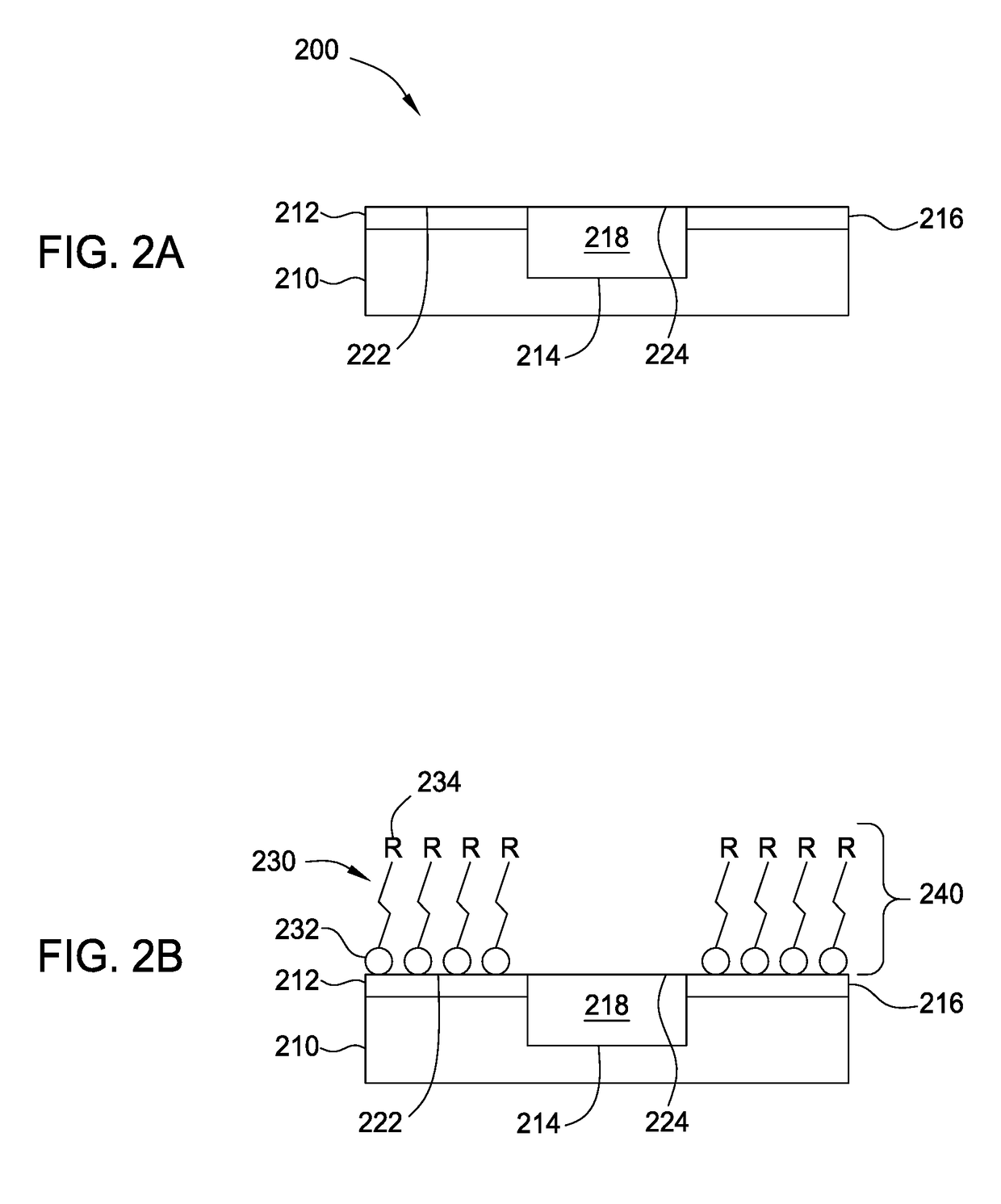Self-assembled monolayer blocking with intermittent air-water exposure
a monolayer and air-water exposure technology, applied in semiconductor/solid-state device manufacturing, basic electric elements, electric devices, etc., can solve the problems of increasing processing capacity, ineffectively preventing the deposition of subsequent material layers, and long time for deposition,
- Summary
- Abstract
- Description
- Claims
- Application Information
AI Technical Summary
Benefits of technology
Problems solved by technology
Method used
Image
Examples
Embodiment Construction
[0016]The following disclosure describes processes for the fabrication of semiconductor devices in which a self-assembled monolayer is used to achieve selective deposition. Certain details are set forth in the following description and in FIG. 1 and FIGS. 2A-2B, to provide a thorough understanding of various implementations of the disclosure. Other details describing structures and systems often associated with semiconductor devices and self-assembled monolayers are not set forth in the following disclosure to avoid unnecessarily obscuring the description of the various implementations.
[0017]Many of the details, dimensions, angles and other features shown in the Figures are merely illustrative of particular implementations. Accordingly, other implementations can have other details, components, and features without departing from the spirit or scope of the present disclosure. In addition, further implementations of the disclosure can be practiced without several of the details descri...
PUM
 Login to View More
Login to View More Abstract
Description
Claims
Application Information
 Login to View More
Login to View More - R&D
- Intellectual Property
- Life Sciences
- Materials
- Tech Scout
- Unparalleled Data Quality
- Higher Quality Content
- 60% Fewer Hallucinations
Browse by: Latest US Patents, China's latest patents, Technical Efficacy Thesaurus, Application Domain, Technology Topic, Popular Technical Reports.
© 2025 PatSnap. All rights reserved.Legal|Privacy policy|Modern Slavery Act Transparency Statement|Sitemap|About US| Contact US: help@patsnap.com



